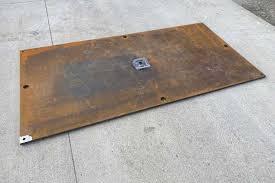Workplace safety audits are crucial for ensuring that healthcare facilities comply with OSHA safety standards and provide a safe environment for both employees and patients. Regular audits not only help identify hazards but also promote a culture of safety, reducing the risk of workplace injuries and illnesses. In this article, we’ll walk you through the process of conducting a comprehensive workplace safety audit in your healthcare facility.
What is a Workplace Safety Audit?
A workplace safety audit is a thorough inspection of your healthcare facility to assess its safety practices and compliance with regulatory standards, particularly OSHA safety standards. The goal is to identify hazards, gaps in safety protocols, and areas that need improvement to create a safer work environment.
Why is a Workplace Safety Audit Important in Healthcare?
In healthcare, workers face numerous hazards such as exposure to infectious diseases, physical strain from patient handling, and the risk of workplace violence. Additionally, the healthcare industry is heavily regulated, and compliance with OSHA safety standards is essential to avoid fines, penalties, and legal issues. Regular safety audits ensure that your facility is meeting all safety regulations, protecting both staff and patients from preventable harm.
Step-by-Step Guide to Conducting a Workplace Safety Audit
Conducting a comprehensive workplace safety audit involves several critical steps. Here’s a breakdown of the process to ensure your healthcare facility remains compliant with OSHA safety standards.
1. Establish Audit Objectives
The first step in conducting a safety audit is to determine the specific goals and objectives of the audit. Ask yourself:
- What safety standards need to be reviewed?
- Are you focusing on specific hazards, such as exposure to bloodborne pathogens or ergonomic risks?
- Are you conducting the audit to ensure OSHA compliance or to identify areas for overall safety improvement?
Setting clear objectives ensures that your audit is focused, thorough, and aligned with your facility’s needs.
2. Review OSHA Safety Standards
Before starting the audit, familiarize yourself with the relevant OSHA safety standards for healthcare facilities. Some of the most critical OSHA standards for healthcare workers include:
- Bloodborne pathogens (29 CFR 1910.1030)
- Personal protective equipment (PPE) (29 CFR 1910.132)
- Workplace violence prevention
- Hazard communication (29 CFR 1910.1200)
- Infection control procedures
Review the standards and ensure that you understand the requirements to look for during the audit. This will help you identify potential areas of non-compliance.
3. Assemble an Audit Team
A safety audit requires a team of individuals with different skill sets and expertise. Typically, an audit team includes:
- A safety officer or manager
- A medical or healthcare expert
- A representative from human resources or risk management
- A representative from the maintenance team
The team should collaborate to ensure that all aspects of workplace safety are addressed, including physical safety, chemical hazards, and environmental factors.
4. Conduct a Walkthrough Inspection
The next step in the audit process is a thorough walkthrough of your healthcare facility. This should involve inspecting each area of the facility, such as patient rooms, hallways, labs, offices, break rooms, and storage areas. Look for the following:
- Hazards: Identify any physical or environmental hazards, such as wet floors, improper lighting, or blocked emergency exits.
- PPE Usage: Check if healthcare workers are using the appropriate PPE for their tasks, such as gloves, masks, gowns, and face shields.
- Sharps Disposal: Ensure that sharps are disposed of in proper containers to avoid accidental injuries.
- Fire Safety: Check the functionality of fire extinguishers, alarms, and emergency exits.
- Cleanliness and Infection Control: Verify that infection control procedures are being followed, including hand hygiene, surface disinfection, and waste disposal.
During the walkthrough, engage with staff to understand their concerns and ensure they are familiar with safety procedures. This also helps identify gaps in safety training and communication.
5. Evaluate Safety Policies and Procedures
In addition to the physical walkthrough, it’s crucial to evaluate your facility’s safety policies and procedures. Are your staff members trained on OSHA safety standards, such as bloodborne pathogen protocols and the correct use of PPE? Do you have a documented workplace violence prevention program?
Key documents to review include:
- Safety manuals and policies
- Incident reports and safety records
- Staff training records
- Emergency response plans
- OSHA compliance documentation
Ensure that these policies are up-to-date, comprehensive, and easily accessible to all staff members.
6. Assess Compliance with OSHA Safety Standards
As part of the audit, compare your facility’s practices with OSHA safety standards. Check for compliance in the following areas:
- Infection Control: Are infection control protocols, such as hand hygiene and PPE usage, being strictly followed?
- Chemical Safety: Are hazardous chemicals labeled properly, and are safety data sheets (SDS) available for all chemicals used in the facility?
- Ergonomics: Is there proper training and equipment available for safe patient handling to prevent musculoskeletal injuries?
- Workplace Violence Prevention: Does your facility have a formal workplace violence prevention program in place, and is it actively enforced?
Document areas where your facility is not meeting OSHA standards and identify corrective actions to bring them into compliance.
7. Identify and Prioritize Hazards
Once you have identified potential hazards and gaps in compliance, it’s important to prioritize them. Not all hazards pose the same level of risk, so focus on the most critical issues first. For example, failure to use PPE in high-risk areas like the emergency room or operating rooms should be addressed immediately, as it presents an increased risk of exposure to infectious materials.
8. Develop an Action Plan
Based on your findings, create an action plan that outlines the necessary steps to resolve identified issues. This plan should include:
- Corrective actions: The specific measures required to address each violation.
- Timeline: The time frame within which the corrective actions must be implemented.
- Responsible parties: Identify the individuals or teams responsible for implementing each action.
Make sure to assign deadlines for each task and follow up to ensure that the actions are completed on time.
9. Communicate Findings and Take Corrective Action
Once the audit is complete, communicate your findings to key stakeholders in your facility, including management, staff, and safety teams. Present the action plan and the timeline for addressing any violations or deficiencies. Involve employees in the corrective action process and keep them informed of any changes that will affect their daily routines.
10. Follow-Up and Continuous Improvement
After implementing corrective actions, conduct follow-up audits to ensure that the changes have been effective. Periodic audits help reinforce a culture of safety and ensure that safety protocols are consistently followed. Regular training and updates on OSHA safety standards will help your healthcare facility maintain a high level of compliance.
Conclusion
Conducting a thorough workplace safety audit is essential for ensuring your healthcare facility remains compliant with OSHA safety standards. Regular audits help identify potential hazards, improve safety protocols, and protect both employees and patients from harm. By following the steps outlined in this guide, your facility can foster a safer working environment while maintaining compliance with OSHA regulations.
For more information on OSHA safety standards and to access valuable training resources, visit getoshacourses.com today.
FAQ
1. What is a workplace safety audit in healthcare?
A workplace safety audit is a systematic review of healthcare facilities to assess safety practices and ensure compliance with OSHA standards.
2. Why is a safety audit important for healthcare facilities?
Safety audits help identify hazards, improve compliance with OSHA standards, and protect both employees and patients from harm.
3. What are the key steps in conducting a safety audit?
Key steps include establishing objectives, reviewing OSHA standards, conducting walkthroughs, evaluating safety procedures, and creating an action plan.
4. How often should a healthcare facility conduct safety audits?
Safety audits should be conducted regularly—ideally annually or after any major changes to ensure compliance and identify potential hazards.
5. What should be included in a healthcare facility’s safety audit checklist?
The checklist should include PPE usage, infection control procedures, hazard communication, fire safety, ergonomic practices, and injury recordkeeping.
6. How do you assess compliance with OSHA standards during an audit?
Assess compliance by comparing your facility’s practices against specific OSHA regulations, such as PPE, infection control, and hazard communication.
7. Who should be part of a healthcare safety audit team?
The audit team should include safety officers, healthcare experts, HR representatives, and maintenance staff to ensure a comprehensive review.


